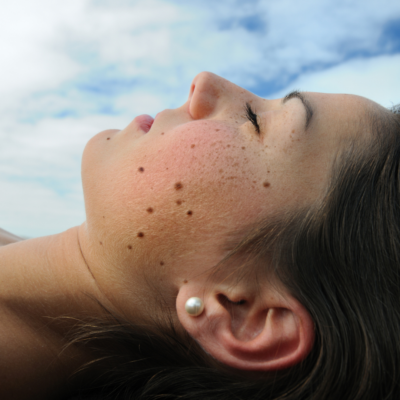Chemical Peels – “Is this going to hurt?”
Edited by Candy Tong
Chemical peels are one of the many treatment options available for exfoliating the skin, healing acne, reducing the appearance of wrinkles, and much more. This is an amazing procedure that can deliver great outcomes – but only if performed properly.
Here at California Skin Institute, our licensed Aestheticians utilize chemical peels on a regular basis to help clients achieve healthy, radiant skin. To do this effectively, our Aestheticians go to great lengths to understand your skin and your unique needs to devise a specialized treatment plan. This is important because every peel has its own unique attributes and will affect your skin in a special way. To better understand how chemical peels work, here’s a quick overview of this amazing procedure and what it has to offer.
History of Chemical Peels – They’re Older than You Think!
The idea of chemical exfoliation goes back thousands of years! Ancient Greeks and Romans used formulations with various milk products (which contain lactic acid) to treat their skin by chemically exfoliating it. Of course, these weren’t anywhere close to the strength of today’s chemical peels, but they were one of the earliest in a series of such treatments (lactic acid and other alpha hydroxy acids are still used in skin care products today!).
Thereafter, a variety of other substances, like resins and myrrh, were also used for exfoliation. Turks are even believed to have gone a step further, using fire to lightly singe skin on the surface so that it would peel off!
However, the more modern practice of using chemical peels started around the mid 1800’s, when the Austrian dermatologist, Ferdinand Hebra, began using chemicals like iodine, sulfuric acid, and hydrochloric acid (among many others) to help patients lighten skin and brighten hyperpigmentation.
Since then, chemical peels have grown significantly in popularity, leading to a large number of peels being available on the market. For example, at California Skin Institute we offer a number of treatments, including glycolic acid, salicylic acid, Jessner, TCA, and VI Peels, just to name a few.
What Does a Chemical Peel Treat?
Chemical peels can reduce or improve fine lines and wrinkles, skin texture, acne, hyperpigmentation, melasma, and other imperfections. There are many chemical peels out there, and although they all work in a similar manner, some are more effective than others at treating certain skin problems. This makes it very important to work with a licensed and experienced Aesthetician who understands the nuances of each peel and how it will affect your skin. At the end of the day, it all comes down to the unique needs of your skin. California Skin Institute Aestheticians will take great care to understand the needs of your skin and recommend a chemical peel to address your specific concerns.
Planning for a Successful Peel
Chemical peels can be very effective and provide excellent outcomes – however, depending on the depth of the peel, a common side effect of this treatment is the associated peeling that can sometimes last 7-10 days. The severity of this peeling will depend on three things; 1) the sensitivity of your skin, 2) the concentration of the peel, and 3) your natural skin tone.
For example, if you have sensitive skin, a peel can cause flaking to be more severe. Therefore, it’s a good idea for individuals with this skin type to plan their peels around time off from work or school, so that the peeling process can take place while they are at home. Further, California Skin Institute Aestheticians will often use a lower concentration for clients with sensitive skin.
Individuals with darker skin tones may also benefit from lower-concentration peels, as this will create a more even final outcome. Whether you have oily, dry or combination skin can also affect how your skin will react to some of the peels.
Lastly, it is vital to consider your plans after the peel. California Skin Institute Aestheticians always talk to their clients to understand this aspect. For example, if you are taking a week off from work, a stronger peel may be a great option because the peeling process will take place while you are at home. On the other hand, if you have an important meeting or an event in a few days, then our Aestheticians may suggest using a lower concentration that will give your skin an added boost – but without the downtime.
Such customization is absolutely vital for a chemical peel to give you the desired outcomes.
If you’d like to learn more about how we perform chemical peels, please visit our Aestheticians page, or book an appointment to set up your consultation!



 / 291 Reviews
/ 291 Reviews